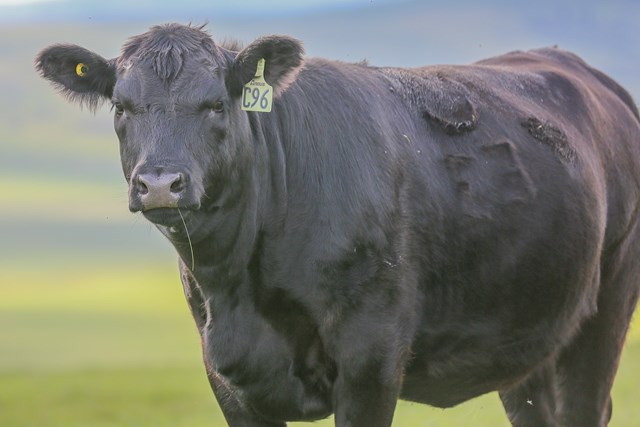It’s no secret that Mother Nature has a major influence over North American cattle numbers. As all producers know, the multi-year southern Plains drought was one of the main reasons the U.S. herd by the end of 2013 had slumped to its smallest since 1951. With pastures burning up under relentless sun and heat and feed grain costs skyrocketing, producers simply had no other choice but to liquidate their herds.
Of course, that big draw down in American beef cattle numbers eventually led to the historic bull market in 2014-15, which in turn led to the herd expansion we are seeing today.
With that in mind, let’s take a look at current U.S. pasture conditions, and what they may be telling us about the potential for continued herd expansion.
U.S. pasture conditions strong
As of the end of August, nationwide pasture conditions were rated 47% good to excellent, down modestly from last year’s 53% good to excellent rating but still comfortably above the five-year average of 42% good to excellent.
The bulk of the year-over-year decline in pasture conditions has plenty to do with the ongoing drought on the northern Plains, which has been dry since the late spring. In North Dakota, for example, just 9% of pastures were rated good to excellent as of the end of August and 66% poor to very poor. South Dakota pastures were slightly better at 16% good to excellent.
However, it is important to remember the northern Plains pales in comparison to the southern Plains in terms of cattle production. North Dakota accounts for less than 2% of the nationwide herd, while South Dakota accounts for 6%. That means that any drought-related liquidation there won’t have nearly the same impact on overall U.S. cattle numbers as it did on the southern Plains.
How about Texas? Uncertainty
In the largest beef production state of Texas – which accounts for about 20% of the U.S. herd – pasture conditions as of the end of August were rated almost half (49%) good to excellent.
That was basically average. It was down a bit from 53% good to excellent a year earlier, but still represented a huge improvement from the drought-ravaged depths of 2011, when pasture conditions in the state dropped as low as just 9% good to excellent, with almost 75% rated poor to very poor.
It is also interesting to note that total Texas cattle and calf numbers, estimated at 12.3 million as of Jan. 1, 2017 were up 4% from the previous year and up almost 13% from the drought low of 10.9 million head at the end of 2013.
According to the U.S. drought monitor, none of Texas was experiencing any kind of drought as of the end of August, with only about 4% of the state considered abnormally dry.
The real question – which is not yet answered definitively- is how much of the state’s production has been (or will be) affected by Hurricane Harvey, which obviously wrought massive damage to the southeastern portion of the state.
Checking Oklahoma, another big cattle state, no drought is currently reported and only about 2% of the state is considered abnormally dry. As of the end of August, a robust 62% of Oklahoma pastures were rated good to excellent.
Although portions of central Kansas are experiencing some moderate drought, pasture conditions in that state still remain relatively strong at 56% good to excellent.
Dry in parts of Western Canada
Shifting north of the border, there are some trouble spots in south-central Saskatchewan and southern Alberta.
Pasture conditions in Alberta were rated at 42% good to excellent as of the end of August, down 6 points from a week earlier and well below 76% good to excellent at the same time a year earlier.
In Saskatchewan, hay land and pasture topsoil moisture was rated 79% short to very short, also down sharply from a year earlier.
Still, the drought in Western Canada does not extend into the north central and farther northerly reaches of the affected provinces, and the number of cattle and producers impacted is less than compared to the massive southern Plains drought of a number of years ago.
Additionally, the Western Producer reported last week that Brian Perillat, senior analyst at Canfax, told the Canadian Beef Cattle Industry Conference in August that despite the dryness in Western Canada, there hasn’t been any great flush of liquidation.
Implications and closing thoughts:
Overall, across North America the pasture and range conditions are neither conducive to aggressive expansion nor forcing severe liquidation of the total North American herd.
Yes, certain production zones are enduring poor conditions prompting some liquidation. Other parts are experiencing excellent conditions that would support more cattle on pasture. Net overall, the weather and resulting range conditions probably lean toward prompting very modest heifer retention and just slight herd expansion.
In general, it could be said that given neutral weather, it will be market forces that play a bigger role in producers’ decisions on whether to expand, liquidate or hold. In that regard, there’s no bullish message to producers to aggressively expand.
You might say that overall, the production machine is chugging along in a low gear without clear weather signals or pricing signals to upshift or downshift.
Explore our cattle feed here.
Brought to you in partnership by:


